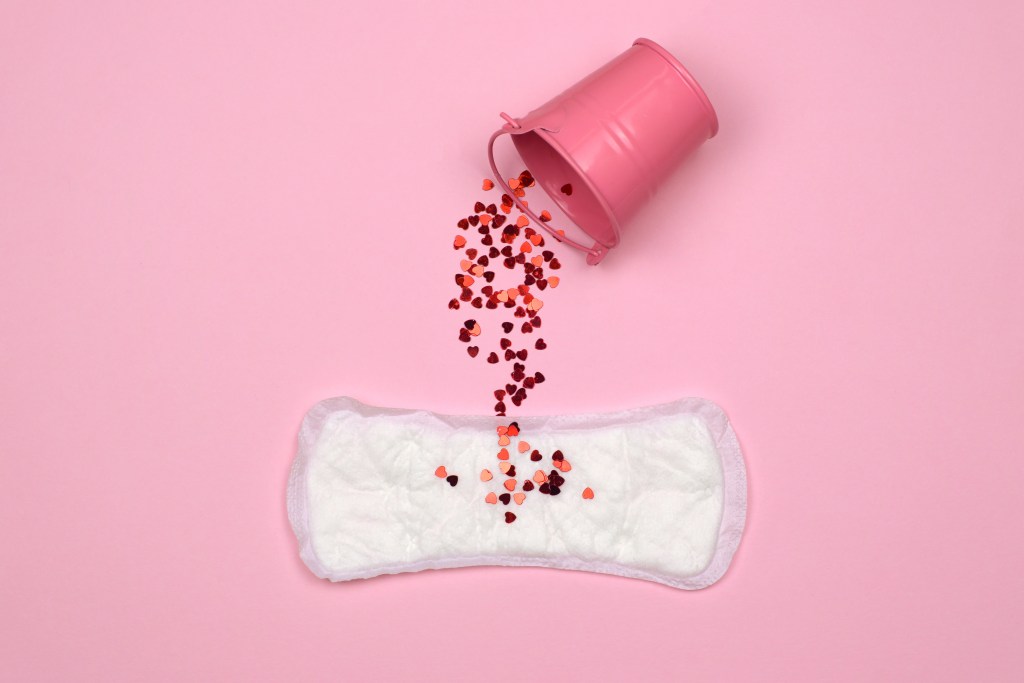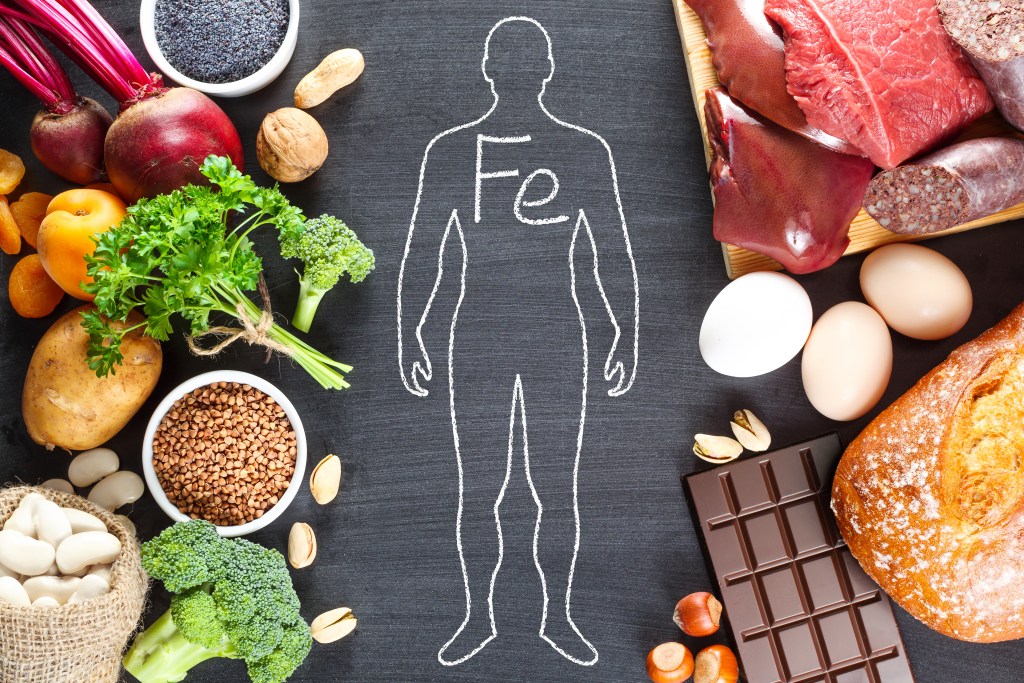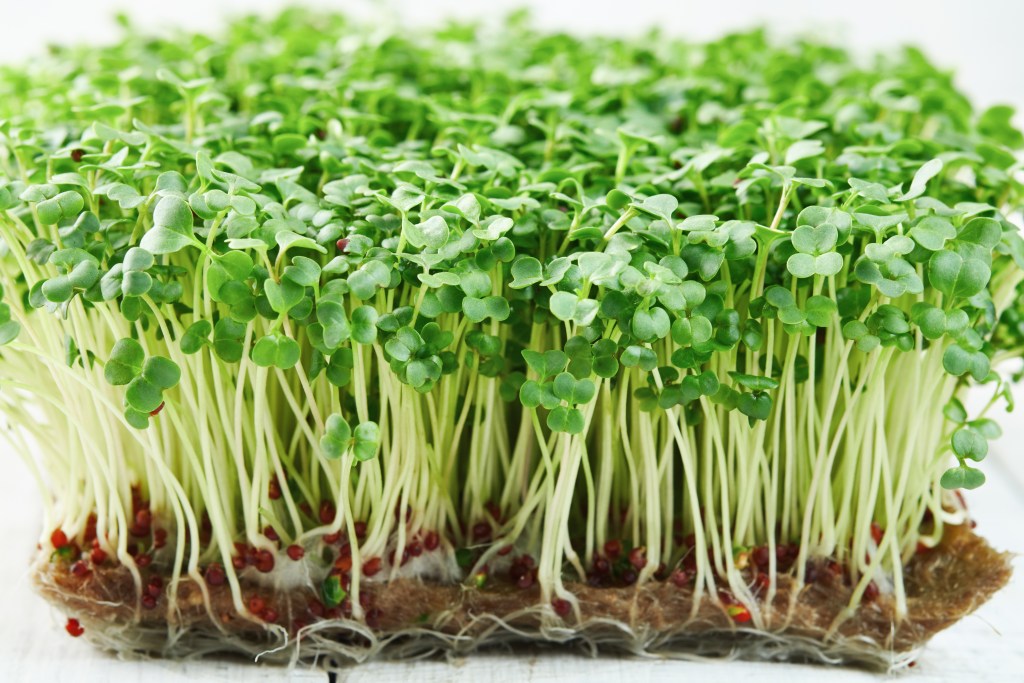At a glance
Iron is an essential mineral that supports the production of hemoglobin and facilitates oxygen transport. Iron deficiency anemia often results from malabsorption, blood loss, or low stomach acid, leading to symptoms such as fatigue, pale skin, and cold hands and feet. Consuming animal products, avoiding refined sugars and carbohydrates, and maintaining optimal stomach acidity reduce the risk of deficiency.
Iron deficiency anemia develops when low iron levels prevent the body from producing enough healthy red blood cells, making it difficult to deliver oxygen to cells and tissues.
As a result, iron deficiency anemia symptoms can be widespread, affecting energy levels, mental focus, mood balance, and overall physical health.
Discover how diet and lifestyle influence iron absorption and explore six natural strategies to help manage symptoms of iron deficiency anemia and support healthy iron levels.
What is iron deficiency anemia?
Iron plays a central role in cellular energy production by helping provide oxygen to the mitochondria, also known as the powerhouse of the cell.
When the body’s iron stores are depleted, the bone marrow can’t produce enough hemoglobin, which is the protein in red blood cells that binds to and carries oxygen throughout the body.
Without adequate hemoglobin, oxygen delivery to tissues is compromised, leading to a condition called iron deficiency anemia.
Iron is essential for overall health, and a deficiency can affect various critical systems, including brain function, metabolic efficiency, and inflammatory responses.
This essential mineral is also crucial for DNA synthesis. When iron stores are low, DNA production can slow down, impairing cell replication, tissue repair, and immune function.
Iron exists in heme iron form found in animal sources and non-heme iron, which can be derived from plant foods.
According to research published by ACS Omega, heme iron is highly bioavailable, offering absorption rates up to 35 percent. Though heme iron typically makes up only 10 to 15 percent of daily iron intake, it can account for more than 40 percent of total intestinal iron absorption.1
Conversely, non-heme iron accounts for 90 percent of daily iron intake. However, it has a significantly lower absorption rate–often under 10 percent–and relies on cofactors, such as vitamin C, to help optimize its absorption.
Watch the video below to learn about the symptoms and causes of anemia.
Iron deficiency anemia symptoms
Iron deficiency anemia symptoms often begin subtly and gradually worsen over time as oxygen delivery to the muscles, brain, and skin declines.
This reduction in oxygen can lead to various physical and cognitive symptoms that are often mistaken for stress, aging, or other health conditions.
Here are common symptoms of iron deficiency anemia:
- Low energy and weakness
- Feeling faint
- Irritability
- Brain fog
- Pale skin
- Brittle nails
- Deep vertical ridges in nails
- Spoon-shaped nails
- Thinning hair
- Twitching
- Arrhythmias
- Cold hands and feet
- Restless leg syndrome
- Pica
Poor exercise tolerance and low energy levels are among the earliest and most persistent symptoms, often presenting long before iron deficiency anemia is diagnosed.
If left untreated, iron deficiency anemia symptoms can progress, leading to chest pain, shortness of breath, or rapid heartbeat. In severe cases, iron therapy with high-dose iron supplements or blood transfusions may be necessary to help restore healthy levels.
A complete blood count (CBC) test is essential for diagnosis if you suspect iron deficiency anemia. Consult a healthcare professional to review your medical history and perform necessary tests to evaluate iron stores and help identify potential underlying causes.

Iron deficiency anemia causes
Iron deficiency anemia can arise from inadequate iron intake, intestinal absorption issues, or excessive blood loss due to gastrointestinal bleeding from stomach ulcers, hemorrhoids, or colon cancer.
Excessive menstrual bleeding, often linked to hormonal imbalances, is another common cause of iron deficiency anemia.
Research published in Cell Metabolism highlights that estrogen can increase hepcidin expression, a hormone that regulates iron levels. When hepcidin levels rise, less iron is absorbed from the diet.2
Consequently, hormonal imbalances, such as estrogen dominance, may worsen symptoms, such as fatigue, mood swings, and irregular cycles, potentially creating a feedback loop that amplifies both conditions.
Iron deficiency can also occur due to low stomach acid levels, which may result from aging, acid-blocking medications, and diets high in carbohydrates.
A low-acid environment can impede the gut’s ability to absorb iron and promote microbial overgrowth, particularly of Helicobacter pylori (H. pylori), which thrives in less acidic conditions.
H. pylori binds to dietary iron and uses it to support growth and proliferation, further suppressing stomach acid secretion, perpetuating microbial imbalance, compromising overall digestive efficiency, and triggering inflammatory responses.
Research published in The Journal of Pediatrics indicates that inflammation can trigger an increase in hepcidin levels, which helps restrict iron access to harmful pathogens as a defense mechanism.3
While this response is beneficial during acute infections, persistently high hepcidin can worsen iron deficiency.
This explains why people with chronic inflammatory conditions, such as celiac disease, inflammatory bowel disease, or gastrointestinal cancer, are at higher risk for developing iron deficiency anemia.

6 remedies for iron deficiency
While iron deficiency anemia managed with oral iron supplements can help relieve symptoms, it may not address the root cause, especially if poor absorption or dietary imbalances are contributing factors.
However, many people can promote a healthier iron status through targeted food and lifestyle strategies that support long-term wellness.
Here are six natural ways to help replenish and maintain optimal iron stores.
1. Prioritize food rich in heme iron
Including heme iron sources in your diet, such as red meat, liver, seafood, poultry, and eggs, is an excellent way to support healthy iron levels.
Heme iron is highly bioavailable, making it significantly easier for the body to absorb and utilize than non-heme iron from plant-based sources.
To enhance iron uptake, pair meals with vitamin C-rich foods such as sauerkraut, which help convert iron into a more absorbable form.
In addition, prioritize eating high-quality animal proteins such as 100 percent grass-fed beef, which provide heme iron and natural cofactors to support absorption.
2. Boost nutrient intake
“Iron deficiency anemia is often related to a copper imbalance,” explains Dr. Berg. “Copper plays a critical role in iron metabolism and oxygen transport.”
To promote balanced copper levels, consume more natural food sources, such as oysters, shellfish, and organ meats, while avoiding copper-depleting factors, including high-fructose corn syrup and processed grains.
Additionally, vitamin D levels may play an essential role in iron metabolism. Research published in Clinical and Translational Gastroenterology found that low vitamin D status was associated with iron deficiency in those with chronic inflammatory conditions.4
The researchers stated that vitamin D may potentially help promote iron utilization “by downregulating hepcidin and upregulating ceruloplasmin, enhancing intestinal iron absorption.”
This highlights the importance of maintaining optimal vitamin D levels through adequate sunlight exposure as well as incorporating dietary sources such as egg yolk and fatty fish.

3. Avoid iron blockers
Certain foods contain compounds that can interfere with iron absorption. These include phytates and polyphenols, found in grains, nuts, soy, coffee, and tea, that bind to iron in the digestive tract and reduce its bioavailability.
Certain iron-fortified breads and cereals may also contain gluten, which has been associated with increased gut permeability and low-grade digestive inflammation, both of which can further impair nutrient absorption.
Calcium-rich foods can also compete with iron for absorption, so it’s best to avoid consuming them alongside iron-rich meals.
4. Promote optimal stomach acidity
Maintaining proper stomach acid levels is crucial for a healthy microbiome and effective nutrient absorption.
Unless you have stomach ulcers, taking apple cider vinegar diluted in water before meals can be an excellent natural strategy to help acidify the stomach.
Fermented foods, such as sauerkraut, also support healthy stomach pH and nutritional uptake by promoting microbial balance, both of which are crucial for iron absorption.

5. Support balanced inflammatory responses
A balanced inflammatory response is essential for improving iron utilization, as chronic inflammation can block iron absorption, making it unavailable for red blood cell production.
Increasing your intake of anti-inflammatory and antioxidant-rich foods, such as broccoli sprouts, which are rich in sulforaphane, may help modulate inflammatory responses and promote optimal iron metabolism.
Other anti-inflammatory foods, such as leafy green vegetables, turmeric, garlic, and wild-caught salmon, can also help promote efficient iron metabolism.
6. Combine intermittent fasting and Healthy Keto®
Combining a Healthy Keto® diet with intermittent fasting can support iron status by promoting balanced immune and inflammatory responses and helping maintain gut health.
Healthy Keto staples, such as 100 percent grass-fed beef, pasture-raised eggs, and dark green leafy vegetables, are excellent sources of dietary iron.
This low-carb, nutrient-dense diet also limits refined carbohydrates, which can disrupt blood sugar balance and contribute to gut dysfunction, further impairing nutrient absorption.
Additionally, intermittent fasting can give your digestive system time to heal, enhance digestive efficiency, promote cellular repair, and support microbiome balance, all of which may help restore iron levels more effectively than increasing iron intake alone.
Key takeaways
- Iron deficiency anemia occurs when low iron levels hinder red blood cell production, which is often linked to blood loss, poor diet, absorption issues, or chronic inflammation.
- Iron deficiency anemia symptoms are broad and may include fatigue, weakness, shortness of breath, pale skin, dizziness, cold hands and feet, brittle nails, and difficulty concentrating.
- While iron supplementation may be required to help restore healthy levels in cases of iron deficiency, it’s also recommended to support iron levels through heme-iron-rich foods, optimal stomach acidity, and anti-inflammatory foods.
FAQ
1. What are the signs and symptoms of iron deficiency?
Symptoms of iron deficiency anemia include low energy, pale complexion, brittle nails, thinning hair, pica, which is characterized by cravings for non-food items such as ice or dirt, restless leg syndrome, irritability, and shortness of breath.
If you suspect anemia, it’s recommended that you get iron deficiency anemia diagnosed through a blood test by a certified health provider.
2. What is the first indicator of iron deficiency anemia?
Low energy is often the first noticeable sign in iron-deficient people. A drop in energy may appear long before more visible symptoms like paleness or brittle nails develop.
3. How do you fix iron deficiency anemia?
To help improve or potentially prevent iron deficiency anemia, consume more foods rich in heme iron, as well as those high in vitamin C and probiotic bacteria to enhance iron absorption. In addition, reduce intake of processed foods and iron inhibitors such as phytates and antacids.
Severe anemia may require iron infusions to help prevent serious complications. consult a healthcare professional for personalized advice.
4. What causes iron deficiency?
Common causes of iron deficiency include blood loss due to heavy periods, low dietary intake, poor iron absorption linked to low stomach acid or gut inflammation, and chronic conditions that sequester iron stores.
Pregnant women need more iron for fetal development, while individuals with frequent blood loss from gastrointestinal bleeding are at higher risk of severe iron deficiency anemia, often requiring iron replacement therapy under medical supervision.








